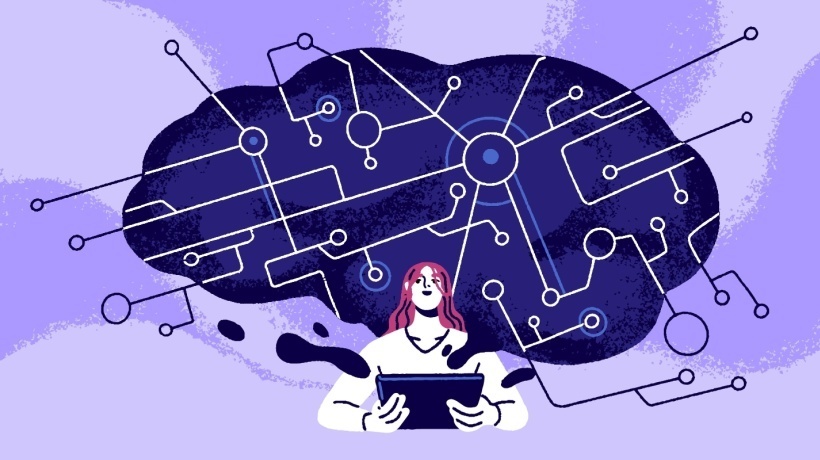The Rise Of AI: A Double-Edged Sword
AI is a fascinating subject. Although it has been around for a few decades now, people were not fully aware that many everyday technologies are powered by AI. For example, recommendation systems on Amazon use AI to suggest products you might be interested in. It is only for the last couple of years, with the emergence of generative AI, that AI's capabilities have become more apparent to the public.
As with anything new and powerful, AI can be a bit scary, especially when we don't understand it well. Public discourse often falls into two extremes:
- Utopian visions – Overly enthusiastic proponents see AI as a panacea for all our problems.
- Dystopian fears – Doomsayers paint a picture of AI taking over humanity, referencing movies like The Terminator.
When fear and xenophobia take hold, they can cloud our judgment and hinder productive conversation.
Defining AI: Capabilities And Limitations
Let's start by defining Artificial Intelligence. To paraphrase a McKinsey report, AI refers to a machine's ability to perform cognitive functions. In other words, it can think, reason, and perceive to some degree like humans. From a learning perspective, AI can perform all the levels of Bloom's taxonomy: remembering, understanding, applying, analyzing, evaluating, and creating new things.
This broad definition raises two important questions:
- How does machine thinking differ from human thinking? While AI can excel at pattern recognition and complex calculations, it currently lacks true human-like understanding and reasoning.
- What can't machines do (yet)? Humans possess unique abilities like common sense reasoning, creativity, and emotional intelligence that are still beyond the reach of current AI.
Understanding The Human Brain: A Blueprint For AI Development
Our limited understanding of the human brain restricts AI development in several ways. By studying the brain, we can potentially:
- Develop more transparent AI. The inner workings of many AI algorithms are opaque, making them difficult to explain and improve. Studying the brain might lead to more transparent and understandable AI systems.
- Draw inspiration for new AI architectures. The human brain's efficiency and adaptability offer inspiration for novel AI designs. Concepts like neural networks are loosely modeled after the structure and connections of neurons in the brain.
- Identify the neural correlates of higher-order thinking. Understanding the brain processes underlying human abilities like creativity and social intelligence can guide the development of AI with these capabilities in the future.
Overcoming Fear Through Exploration
Fear often arises from the unknown. By actively learning about AI, we can demystify its capabilities and alleviate our anxieties. Here are some ways to explore AI:
- Read articles and books about AI.
- Use AI-powered tools in your daily life.
- Discuss AI with friends and colleagues.
- Expanding your knowledge base allows you to assess the true impact of AI on your job and life.
Mitigating Job Displacement: Options And Strategies
While AI might automate some tasks, it's unlikely to replace all human jobs. If AI does pose a threat to your current role, proactive steps can be taken:
- Upskilling – Learn new skills complementary to AI to enhance your value proposition.
- Reskilling – Develop entirely new skillsets to transition to different careers.
- Leveraging AI – Explore how to use AI tools to your advantage in your current position.
Emotional Intelligence: A Uniquely Human Advantage
AI currently lacks emotional intelligence (EQ), which encompasses the ability to:
- Recognize, understand, and manage one's own emotions.
- Perceive and understand the emotions of others.
- Use emotional knowledge to inform behavior and relationships.
This inherent human advantage offers a form of job security that AI is unlikely to replicate in the foreseeable future.
Moving Forward: A Collaborative Future
A passive approach to AI carries the risk of missing out on opportunities. Actively engaging with AI can open doors to new possibilities. We must move beyond fear-mongering and unfounded anxieties. AI has the potential to be not a threat but a powerful tool to augment human capabilities, particularly when combined with our unique emotional intelligence.
Embracing AI and actively engaging with it can lead us towards a collaborative future where humans and machines work together synergistically. Instead of passively observing technological advancements, we should proactively seek ways to integrate AI into various aspects of our lives. By doing so, we can unlock a multitude of opportunities and enhance human potential.
One of the key aspects of moving forward with AI is overcoming unfounded fears and anxieties. While it's natural to feel apprehensive about the unknown, it's essential to approach AI with an open mind and a willingness to explore its potential benefits. Fear-mongering only serves to hinder progress and prevent us from realizing the transformative impact AI can have on society.


